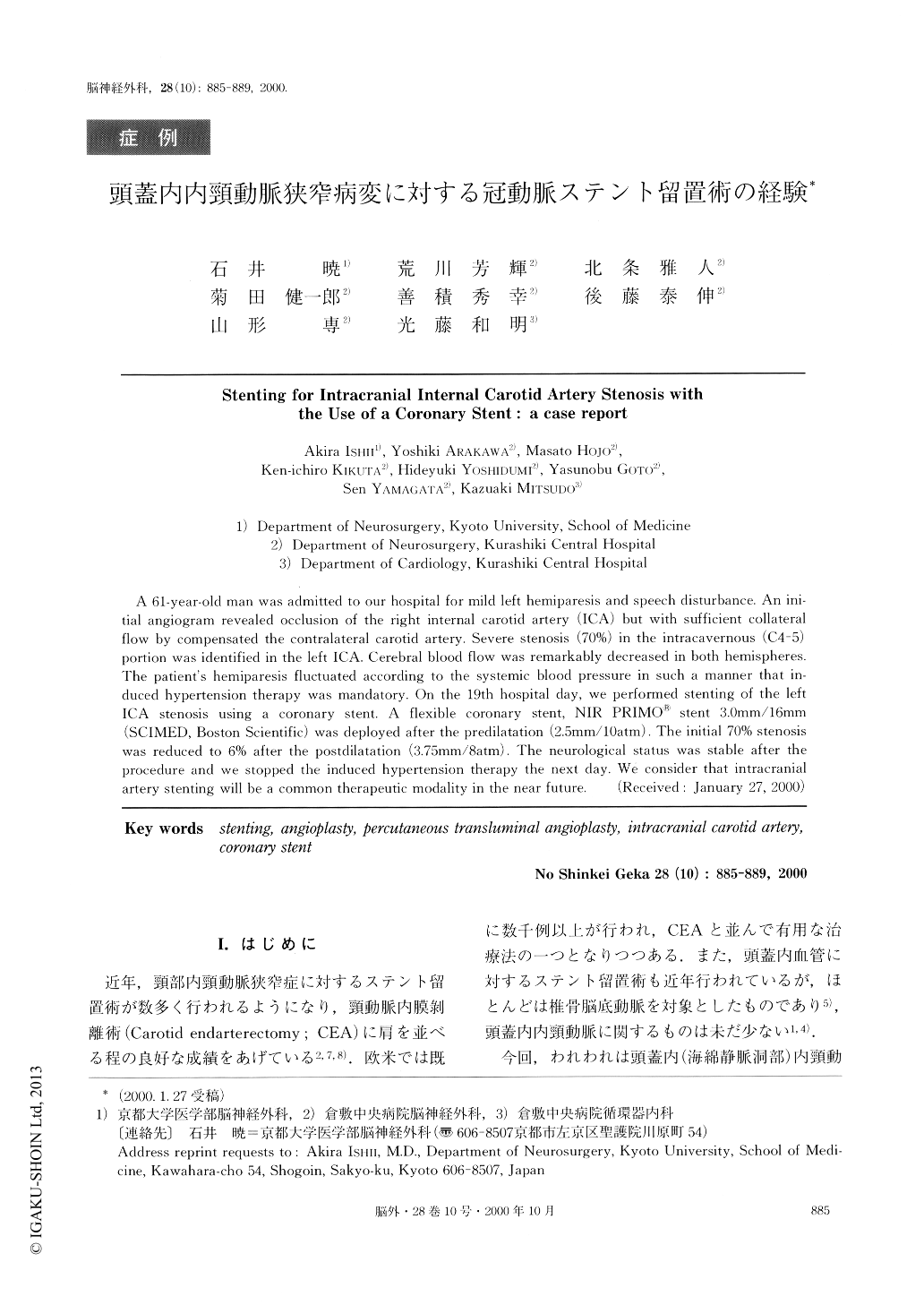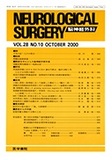Japanese
English
- 有料閲覧
- Abstract 文献概要
- 1ページ目 Look Inside
I.はじめに
近年,頸部内頸動脈狭窄症に対するステント留置術が数多く行われるようになり,頸動脈内膜剥離術(Carotid endarterectomy;CEA)に肩を並べる程の良好な成績をあげている2,7,8).欧米では既に数千例以上が行われ,CEAと並んで有用な治療法の一つとなりつつある.また,頭蓋内血管に対するステント留置術も近年行われているが,ほとんどは椎骨脳底動脈を対象としたものであり5),頭蓋内内頸動脈に関するものは未だ少ない1,4).
今回,われわれは頭蓋内(海綿静脈洞部)内頸動脈狭窄病変の1例に対して,冠動脈用ステントを使用したステント留置術に成功したので,若干の考察を加えて報告する.
A 61-year-old man was admitted to our hospital for mild left hemiparesis and speech disturbance. An ini-tial angiogram revealed occlusion of the right internal carotid artery (ICA) but with sufficient collateral flow by compensated the contralateral carotid artery. Severe stenosis (70%) in the intracavernous (C4-5) portion was identified in the left ICA. Cerebral blood flow was remarkably decreased in both hemispheres. The patient's hemiparesis fluctuated according to the systemic blood pressure in such a manner that in-duced hypertension therapy was mandatory. On the 19th hospital day, we performed stenting of the left ICA stenosis using a coronary stent. A flexible coronary stent, NIR PRIMO®a stent 3.0mm/16mm (SCIMED, Boston Scientific) was deployed after the predilatation (2.5mm/10atm). The initial 70% stenosis was reduced to 6% after the postdilatation (3.75mm/8atm). The neurological status was stable after the procedure and we stopped the induced hypertension therapy the next day. We consider that intracranial artery stenting will be a common therapeutic modality in the near future.

Copyright © 2000, Igaku-Shoin Ltd. All rights reserved.


